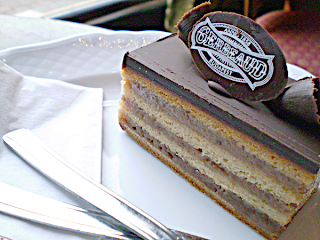Festive season, with days between the main events, calls for a family pleaser prepared ahead and reheated when needed. This Northern Italian staple is earthy, hearty and more on par with rich Central European flavours than the usual fresh Mediterranean dishes we love to cook. When beef shanks, cross-cut to expose the bone marrow, are slow cooked with root vegetables, the layers simmer down to a deeply satisfying thick stew. However, the grand finale sprinkling of zesty gremolata gives this dish that unmistakable Italian accent. Served with saffron risotto makes a perfect combo, but goes just as well with simple pappardelle or polenta.
Ingredients for 4 servings
If you want to have some leftovers, simply double the recipe quantities. Please do not substitute the meat cuts, oozing bone marrow is necessary to round up this dish, literally translating from Italian to ‘bone with a hole’.
- 4 veal or beef shanks (approx 330g each, 3-4cm high)
- white flour, as needed
- 60 g butter
- 1 medium size onion
- 2 small carrots
- 2 sticks of celery
- 1 dl good-quality, dry white wine
- 1 dl beef broth
- white pepper
- salt
- Gremolata alla Milanese:
- 1 handful of chopped parsley
- zest of one lemon
- 1 large clove of garlic
- 2 anchovy fillets (optional)
- OPTIONAL
- a small amount of chopped tomato, or tomato paste
- extra virgin olive oil in addition to butter or as butter substitution
- depending on the broth quality you can add bouquet garni
- Note: The original, centuries-old recipe for ossobuco calls for it to be made in bianco, meaning without tomatoes. Tomato, brought to Europe by Spaniards in the 1500s, was long believed by many Italians to be inedible or even poisonous, and although it gradually made its way into southern dishes, it wasn't until the late 19th century that it first began appearing in recipes for Milanese-style ossobuco.
- Method
- Make small cuts along the edges of veal shanks, as that will prevent the meat from shrinking during cooking.
- Sauté onion, carrots and celery in butter, until softened, then transfer them to a plate. Dip the veal shanks in flour, patting off any excess.
- In the same pan, brown the veal shanks on each side, then add the carrots and onions and pour in the white wine. Lower the heat, and wait until the wine evaporates.
- Next, pour in the broth into the pan and season with pepper and salt. Cover with a lid and let it simmer, turning the meat from time to time, or adding more broth if necessary (at this point you would add tomatoes, if using).
- The meat is done when it falls off the bone. At that point, put ossobuco on a serving plate, top the meat with gremolata, and then pour them over with the sauce from cooking.









